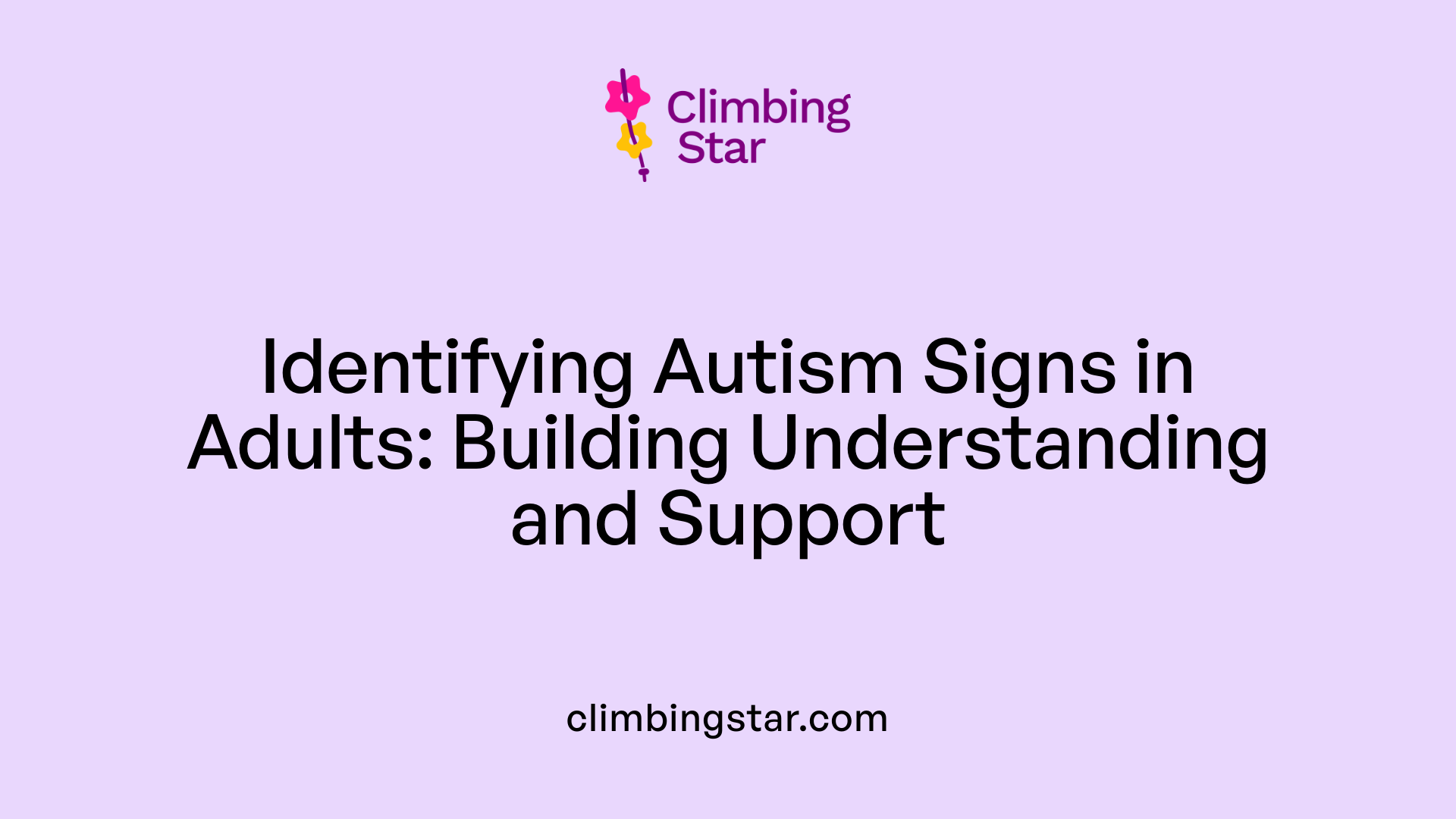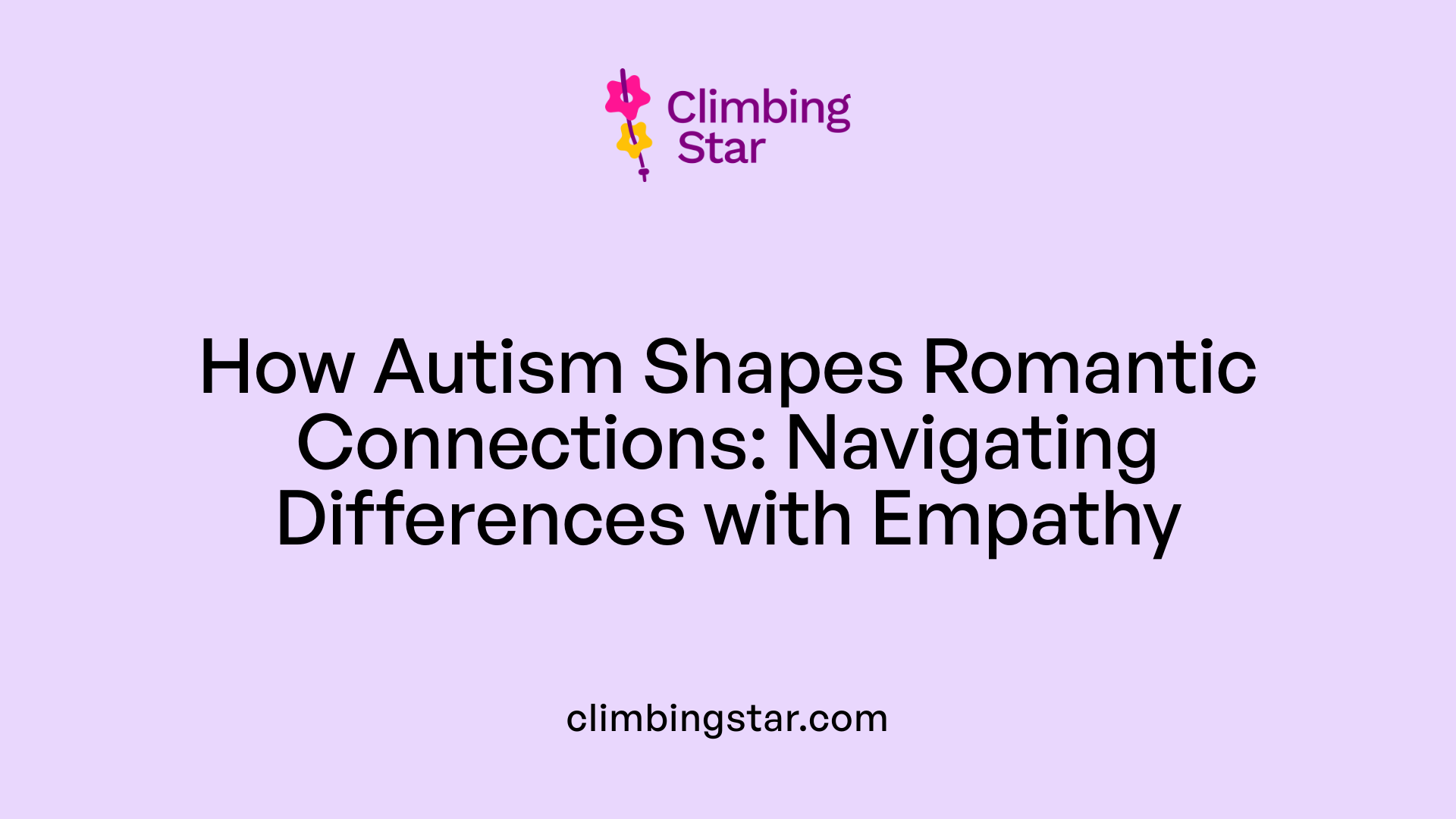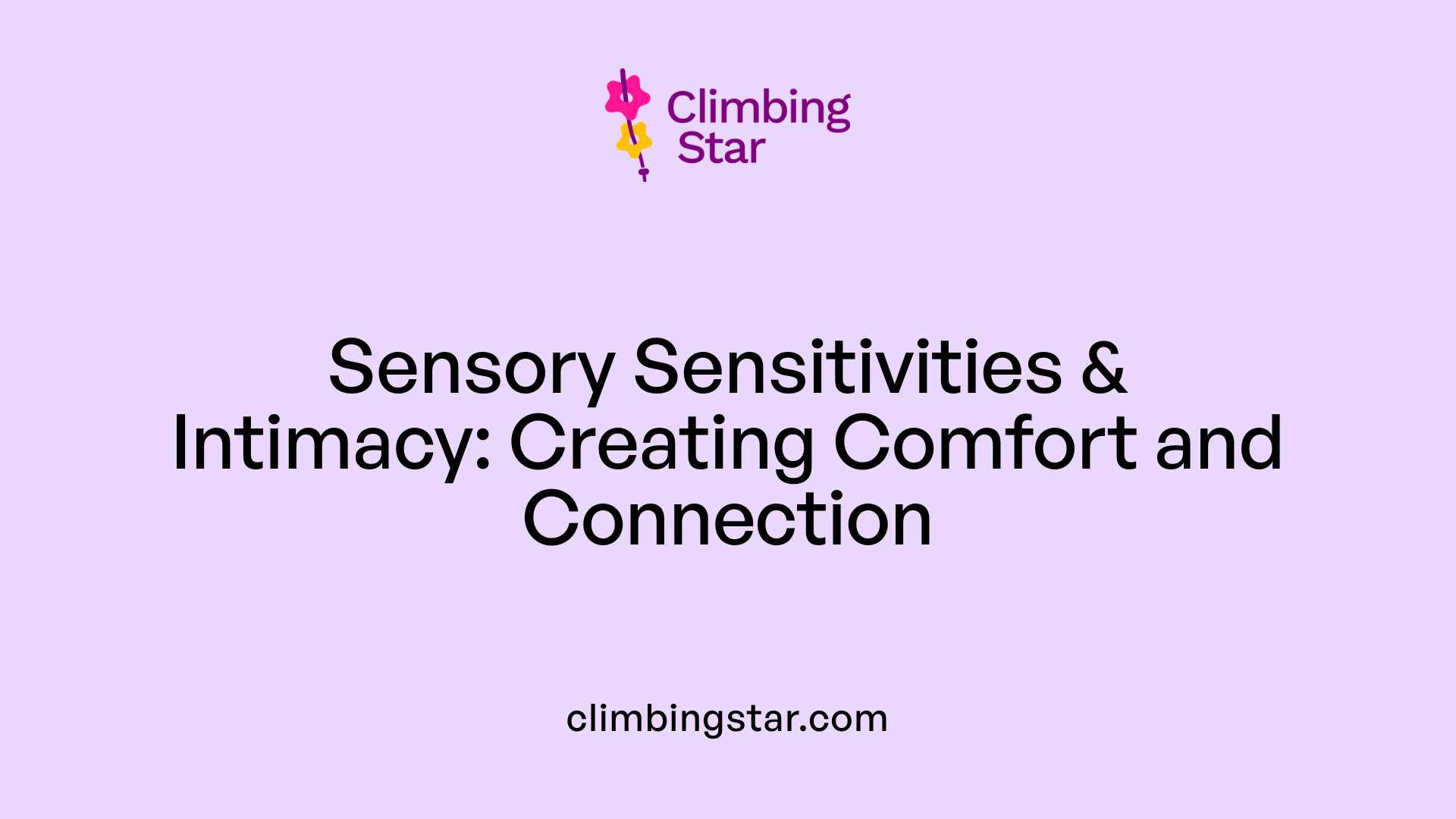Navigating the Question: Does My Boyfriend Have Autism?
Recognizing autism in adults, particularly in romantic partners, can be complex yet enlightening. This article explores common signs of autism in adult relationships, the unique challenges autistic individuals and their partners face, and effective strategies to foster understanding and connection. Additionally, we delve into therapeutic approaches like Applied Behavior Analysis (ABA) therapy that many find beneficial. Whether you're seeking to understand your boyfriend’s behaviors or looking for ways to strengthen your relationship, this guide will provide compassionate insights and practical advice.
Recognizing Common Signs of Autism in Adult Relationships

What are common signs of autism in adults?
Common signs include difficulty understanding others’ feelings, social anxiety, challenges in making friends, and a preference for solitude. Adults with autism often struggle with understanding social rules and may avoid eye contact or feel uncomfortable with physical closeness.
Behavioral Traits and Social Challenges
Key behavioral traits include intense interests and fixation on specific topics, which may lead to rigidity in thoughts and routines. Many autistic adults prefer consistency and can be inflexible with changes in daily activities or social plans. Social anxiety is also frequent, making it harder to form or maintain friendships.
Communication and Social Cue Difficulties
Autistic adults commonly have difficulty reading social cues and interpreting figurative language, tending to interpret language literally. Differences in communication styles include atypical eye contact and unique approaches to conversation. These can affect emotional reciprocity and shared understanding in relationships.
Sensory Sensitivities and Intimacy Impact
Sensory issues are prevalent in about 90% of autistic adults and can influence experiences of physical intimacy. Sensitivities to touch, sound, or clothing textures may cause discomfort or avoidance, impacting bonding and closeness with partners.
Preference for Routine and Inflexibility
Many autistic individuals thrive on routine and may resist spontaneous changes. This preference can create challenges in accommodating last-minute plans or unexpected social interactions in relationships.
Understanding these signs helps partners foster greater empathy and adopt supportive communication and interaction strategies conducive to fulfilling adult relationships.
| Aspect | Sign or Trait | Impact on Relationships |
|---|---|---|
| Behavioral Traits | Intense interests, perseveration | Rigidity in activities, preference for routine |
| Social Challenges | Social anxiety, difficulty making friends | Isolation, reduced social bonding |
| Communication Differences | Literal language use, difficulty reading cues | Misunderstandings, need for clear expression |
| Sensory Sensitivities | Aversion to touch, noise, certain textures | Challenges with intimacy and physical closeness |
| Eye Contact and Interaction | Avoiding eye contact, atypical communication styles | Affects emotional connection and communication flow |
Understanding How Autism Impacts Romantic Relationships

Communication Differences and Misunderstandings
Autistic adults often interpret language literally and may struggle with figurative speech, which can lead to communication misunderstandings in romantic relationships. Being straightforward, asking for clarification, and practicing active listening are effective communication strategies that help bridge these gaps.
Unique Social-Emotional Reciprocity
Social-emotional reciprocity can be different for autistic individuals. Difficulties in reading social cues and differences in expressing feelings may cause puzzlement or frustration for both partners. Education about autism and patience enable mutual understanding, fostering deeper connections.
Influence of Sensory Processing on Intimacy and Physical Closeness
Sensory sensitivities are common in autism, with many experiencing aversions to touch, proximity, or certain physical sensations. These differences impact experiences of physical intimacy, which is crucial for emotional bonding. Supporting sensory needs and clear communication about comfort levels improve physical closeness.
Anxiety and Frustration Faced by Partners
High levels of anxiety and the desire for consistency can lead to stress within the relationship. Both autistic individuals and their neurotypical partners may feel exhausted or confused, but these emotions can be alleviated through patience, mindfulness, and mutual adaptation.
Importance of Recognizing Strengths and Challenges in Both Partners
A balanced relationship involves acknowledging each partner’s strengths and weaknesses. For instance, task organization can be distributed according to individual aptitudes, enhancing cooperation and reducing stress.
Effects of Intense or Narrow Interests on Shared Activities
Many autistic adults have specialized or intense interests, which influence how couples spend time together. Engaging in activities aligned with these interests or finding creative compromises supports shared enjoyment and relationship satisfaction.
Navigating Communication Challenges with an Autistic Partner
The importance of straightforward, clear communication
Clear and straightforward communication forms the backbone of successful relationships involving autistic partners. Autistic adults often interpret language literally and may find figurative speech or ambiguous statements confusing. Being direct helps prevent misunderstandings and promotes a shared understanding between partners.
Recognizing and interpreting nonverbal cues
While autistic individuals might have difficulty reading typical social cues, recognizing and respecting their unique nonverbal communication is crucial. Partners can learn to observe subtle signals and patterns in behavior instead of relying solely on typical body language or eye contact.
Asking for clarification to avoid misunderstandings
It's beneficial for both partners to ask questions and seek clarification whenever something is unclear. This practice prevents assumptions and fosters an open dialogue, ensuring both parties feel understood and valued.
Practice of patience and active listening
Maintaining patience and actively listening cultivates a supportive environment. Frustration and exhaustion can occur in any relationship, but with autism-aware patience and listening, conflicts can be resolved more easily.
Literal language interpretation and tendency to fixate on certain topics
Autistic partners may focus deeply on specific interests and prefer concrete expressions. Understanding this tendency encourages respect for their passions and helps guide conversations productively.
Need for flexibility in social plans and routines
While autistic adults often prefer consistency and routine, flexibility is equally important. Partners can work together to find balanced compromises that respect the need for predictability while allowing spontaneity when possible.
By embracing these communication strategies—clarity, patience, inquiry, and adaptability—couples involving autistic partners can build stronger, more empathetic relationships that honor both individual needs and shared goals.
Building Mutual Understanding and Emotional Connection

Studying About Autism to Enhance Empathy
Gaining knowledge about autism spectrum disorder is fundamental to fostering empathy between partners. Understanding traits such as differences in social communication, restricted interests, sensory sensitivities, and executive functioning challenges can help demystify behaviors and reduce misunderstandings.
Asking Questions About Motivations and Insecurities
Openly asking your partner about their motivations and insecurities builds trust and clarity. This dialogue allows each person to express their feelings and needs, addressing unique traits like anxiety or the desire for routine.
Sharing Perspectives Between Partners
Mutual sharing of experiences and viewpoints encourages connection. Autistic individuals may interpret communication literally or have distinct emotional expressions, so exchanging perspectives helps partners appreciate one another's ways of relating.
Reducing Exhaustion and Frustration Through Education
Frustration and exhaustion often arise in relationships due to mismatched social expectations or communication barriers. Education about autism equips both partners with strategies to mitigate these challenges, improving patience and decreasing stress.
Value of Patience and Ongoing Learning
Patience is essential as partners navigate differences in executive functioning skills and cognitive processing. Continuous learning about autism fosters adaptability and empathy, enriching the emotional bond.
Acknowledging Differences in Executive Functioning and Cognitive Styles
Recognizing variations, such as difficulties with multitasking or literal language interpretations, allows couples to accommodate each other's needs. This recognition leads to better shared decision-making and balance in the relationship.
Supporting Sensory Needs and Physical Intimacy

How Do Sensory Processing Differences Affect Touch in Autism?
Sensory processing differences affect about 90% of autistic individuals and play a significant role in how physical touch is experienced. Many autistic adults have either sensory hypersensitivity, making touch feel overwhelming or uncomfortable, or hyposensitivity, which can dull tactile sensations. These differences influence how physical intimacy is perceived and enjoyed.
What Challenges Do Autistic Adults Face Regarding Sensory Overload or Aversion?
Autistic individuals may experience aversion or overload from sensory input like certain textures, pressure, or proximity, which can make physical touch distressing. Loud noises, tags on clothing, or sudden touch can trigger discomfort or anxiety. This aversion can challenge aspects of physical intimacy and requires thoughtful adaptation.
What Is the Range of Experiences with Physical Intimacy Among Autistic Individuals?
Experiences with physical intimacy vary widely. Some autistic adults enjoy cuddling and physical closeness, which supports bonding and emotional reassurance. Others identify as asexual or have low sexual interest but still desire romantic connections. Understanding this diversity is essential for respectful and fulfilling relationships.
Why Is Communication About Sensory Needs Important?
Clear communication about sensory preferences and boundaries is vital. Discussing what types of touch are comforting or uncomfortable helps build mutual understanding. Both partners can benefit from straightforward dialogue to align expectations and support one another's needs.
How Can Mindfulness and Environmental Adaptations Support Sensory Needs?
Practicing mindfulness or meditation can help regulate sensory sensitivities and reduce anxiety related to touch. Adapting living spaces—such as minimizing noise, choosing comfortable fabrics, or controlling lighting—creates safer environments that honor sensory differences and enhance comfort.
How Can Safe Spaces Be Created to Honor Sensory Preferences?
Creating safe spaces means arranging physical settings tailored to sensory preferences. For example, offering weighted blankets for soothing pressure, ensuring privacy, and allowing choices about physical proximity empower autistic individuals. These accommodations foster emotional safety and strengthen intimacy.
| Aspect | Description | Example |
|---|---|---|
| Sensory Processing Differences | Autistic adults may have hypersensitivity or hyposensitivity to touch | Overwhelm from certain textures or dulled sensation |
| Sensory Overload and Aversion | Sensory input causing discomfort or anxiety | Dislike of tags in clothing or unexpected touch |
| Diverse Intimacy Experiences | Varied sexual and romantic interests among autistic people | Some identify as asexual, others enjoy cuddling |
| Communication Importance | Discussing sensory needs and boundaries | Using clear language to express comfort levels |
| Mindfulness and Adaptations | Techniques and changes to reduce sensory stress | Meditation; minimizing sensory triggers in environment |
| Creating Safe Spaces | Tailoring environments to sensory preferences | Use of weighted blankets; controlling lighting and sound |
Supporting sensory needs in relationships fosters emotional connection and physical comfort, making intimacy more accessible and enjoyable for autistic adults and their partners.
Applied Behavior Analysis (ABA) Therapy: What It Is and Who Provides It
What is Applied Behavior Analysis (ABA) therapy?
Applied Behavior Analysis (ABA) therapy is a scientific method focused on understanding and shaping human behaviors through learning principles in real-life contexts. The primary goal of ABA is to enhance essential skills such as communication, social interactions, academics, and daily living skills while reducing behaviors that may be challenging, especially for individuals with autism spectrum disorder (ASD).
The therapy uses techniques like positive reinforcement — rewarding desired behaviors to encourage their recurrence — prompting to guide actions, behavior chaining to teach complex tasks in smaller steps, and detailed behavior analysis. Each treatment program is personalized, aiming to match individual needs. Progress is closely tracked through data collection to adjust strategies as needed, making ABA an evidence-based intervention that can significantly improve people's quality of life.
Who typically provides ABA therapy?
ABA therapy is delivered by a professional team specializing in behavior analysis. At the helm are Board Certified Behavior Analysts (BCBAs), who design custom treatment plans, conduct thorough assessments, and provide training and supervision to other team members and caregivers.
Supporting the BCBAs, Board Certified Assistant Behavior Analysts (BCaBAs) assist with analysis and oversee implementation. Registered Behavior Technicians (RBTs) work directly with clients, carrying out therapy sessions, gathering data, and fostering family relationships under supervision. This collaborative approach ensures ethical, effective, and personalized care tailored to each individual's needs.
How ABA Therapy Works to Support Autistic Individuals
How does ABA therapy work in treating autism?
Applied Behavior Analysis (ABA) therapy uses learning and behavior principles to support autistic individuals. It helps develop new skills and reduces challenging behaviors by examining three parts of behavior, known as the A-B-C model:
- Antecedents: What happens right before a behavior occurs.
- Behavior: The actual action or response.
- Consequences: What happens immediately after, influencing future behavior.
What techniques are used in ABA therapy?
ABA employs several strategies like prompting (giving hints or cues), modeling (demonstrating behavior), chaining (breaking down tasks into small steps), and extinction (reducing unwanted behaviors by withholding reinforcement). These techniques make learning manageable by focusing on one step at a time.
What skills are targeted in ABA therapy?
The therapy is personalized to each individual, targeting areas such as communication, social interaction, and daily living skills, including self-care and organization. Board Certified Behavior Analysts (BCBAs) develop intensive and tailored treatment plans based on specific needs.
Why is personalization important?
Since every autistic person is unique, personalized plans ensure therapy addresses particular strengths, challenges, and goals, maximizing progress. Intensive and consistent treatment over time enhances improvements in language, social functioning, and adaptive behaviors.
ABA therapy offers a structured approach grounded in science, helping autistic individuals thrive through supportive and focused interventions.
Addressing the Effectiveness and Limitations of ABA Therapy
Is ABA therapy effective for all individuals with autism?
Applied Behavior Analysis (ABA) therapy is widely recognized as an evidence-based intervention for supporting many individuals with autism. It often yields improvements in communication, social interaction, and behavior regulation. However, its effectiveness varies significantly due to the diverse needs and differences in strengths among autistic individuals.
Variability in therapy outcomes among individuals
Not all autistic adults respond similarly to ABA therapy. Factors such as sensory sensitivities, communication style, cognitive abilities, and anxiety levels influence outcomes. For some, ABA delivers substantial progress, while others find limited benefit or experience discomfort if therapy is too rigid or not empathetic to their experiences.
Importance of tailoring therapy to individual needs
Personalizing ABA interventions is crucial. Therapy that respects an individual's preferences, routines, and communication methods helps foster positive engagement. Tailored approaches that incorporate understanding of sensory challenges or unique communication patterns can improve both cooperation and effectiveness.
Quality and consistency in delivery affecting success
The success of ABA therapy also hinges on the quality and consistency with which it is delivered. Skilled therapists who maintain patience, flexibility, and clear communication can help reduce anxiety and frustration often encountered by autistic adults during interventions.
Recognizing ABA is not a one-size-fits-all solution
It is important to acknowledge that ABA therapy should not be seen as a universal remedy. Its applicability varies, and for some autistic adults, other therapeutic approaches or additional support may be more appropriate in addressing emotional, sensory, or social complexities.
Integration with other therapeutic and support approaches
Combining ABA with autism-aware counseling, behavioral analysis tailored to neurodivergence, and peer support can enhance outcomes. Collaborating with specialists familiar with the autism spectrum helps balance intervention strategies and address challenges comprehensively.
Balancing strengths and challenges in treatment
Successful treatment recognizes both the strengths and difficulties experienced by the autistic individual. By organizing therapeutic goals around personal aptitudes and sensitivities, ABA can be more meaningful and respectful, ultimately improving relationship and communication skills vital for daily living.
| Aspect | Considerations | Impact on Therapy Outcome |
|---|---|---|
| Individual Differences | Sensory sensitivities, communication styles | Requires personalization of interventions |
| Therapy Quality | Consistency, patience, therapist expertise | Influences engagement and stress levels |
| Therapy Flexibility | Adaptation to routines and preferences | Enhances comfort and cooperation |
| Integration with Other Supports | Use of counseling, peer support | Provides holistic benefits beyond behavioral focus |
| Strength-Based Approach | Leveraging aptitudes and interests | Promotes motivation and meaningful progress |
Fostering Healthy Relationships: Practical Tips for Partners

Maintaining Consistency and Adapting to Sensory Needs
Consistency plays a vital role in supporting autistic partners. Keeping routines predictable reduces anxiety and helps create a safe, comfortable environment. Moreover, adapting living spaces to accommodate sensory sensitivities—such as minimizing loud noises, soft lighting, or removing irritating clothing tags—can significantly ease sensory overload and foster relaxation.
Organizing Tasks to Leverage Strengths
Recognize and appreciate each partner’s unique strengths and weaknesses. For example, one partner might excel in planning and organization, while the other shines in creative problem-solving. By distributing responsibilities according to individual aptitudes, couples can maintain balance and reduce stress, promoting teamwork and mutual respect.
Encouraging Engagement in Neurodivergent Communities
Participation in neurodivergent groups offers autistic adults a sense of belonging and understanding. These communities provide opportunities to meet others with shared experiences, encouraging social engagement in a comfortable setting. This connection can enhance confidence and improve social skills over time.
Promoting Skills Like Reading Body Language
Learning to interpret nonverbal cues is beneficial for autistic individuals and their partners alike. Practice and patience can improve decoding body language and facial expressions, leading to clearer communication and less misunderstanding. Partners should openly discuss their preferred communication styles to bridge gaps.
Managing Anxiety and Communication Gaps
Anxiety and communication challenges are common in autistic relationships but can be mitigated through education and patience. Using straightforward language, asking clarifying questions, and practicing active listening help prevent confusion and ease frustrations. Being mindful of sensory triggers also supports emotional wellbeing.
Seeking Support Through Autistic-Focused Counseling and Groups
Professional counseling specializing in neurodiversity, along with support groups for autistic adults and their partners, offers valuable guidance. These resources provide strategies for navigating relationship challenges and help both partners understand and accommodate each other’s needs more effectively.
Towards Compassion and Connection: Conclusion
Why is empathy and ongoing education important in neurodiverse relationships?
Empathy and continuous learning serve as the foundation for nurturing relationships involving autistic adults. By striving to understand the unique experiences and challenges faced by neurodivergent partners, individuals can foster deeper compassion and reduce misunderstandings.
How do we value neurodiverse perspectives and embrace differences in relationships?
Recognizing and celebrating the diverse ways in which autistic individuals perceive and interact with the world enriches relationships. Embracing differences such as unique communication styles, sensory preferences, and focused interests helps build stronger connections that honor both partners' identities.
What role do patience and mutual respect play?
Patience allows space for navigating complexities like sensory sensitivities and executive functioning challenges, while mutual respect ensures both partners feel heard and valued. Together, they create an environment where differences become strengths rather than obstacles.
What opportunities for growth does autism-aware support provide?
Access to autism-informed counseling, support groups, and educational resources empowers couples to develop effective communication strategies and coping mechanisms. This support can transform challenges into shared opportunities for growth and understanding.
Why is open communication and flexibility encouraged?
Transparent dialogue and adaptability are vital to managing evolving needs and unexpected situations. Open communication encourages honesty about feelings and sensory needs, while flexibility helps partners adjust routines and expectations to maintain harmony.
By integrating empathy, respect, and informed support, neurodiverse relationships can flourish with authenticity, connection, and mutual growth.
Building Stronger Bonds with Autism Awareness
Recognizing autism traits in your boyfriend is the first step towards fostering deeper understanding and connection. While challenges in communication, sensory experiences, and social interaction can arise, they are not barriers to fulfilling relationships. Applying knowledge about autism spectrum traits, embracing clear communication strategies, and seeking supportive therapies like ABA when appropriate, create pathways for mutual growth. Relationships grounded in patience, empathy, and respect for neurodiversity thrive. With informed awareness and heartfelt effort, couples can build strong, satisfying bonds — turning differences into strengths and creating love that embraces all facets of identity.
References
- Adult Autism and Relationships
- Signs of autism in adults
- 8 Signs Your Partner Is on The Autism Spectrum
- Asperger's and adult relationships: How it affects them
- Comparing Physical Intimacy and Romantic Relationships ...
- ABA Therapy Goals: 25 Practical Examples & Timelines
- Applied Behavior Analysis (ABA)
- What Are the Goals of ABA Therapy? A Comprehensive ...
- ABA Therapy Examples, Definition & Techniques
- Applied Behavior Analysis (ABA)







